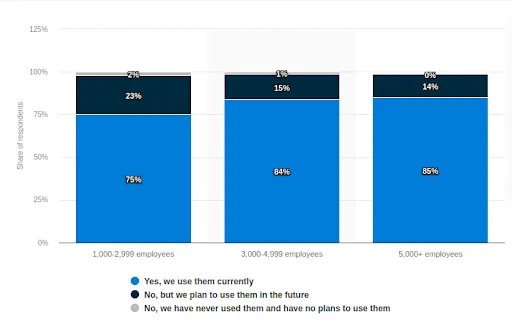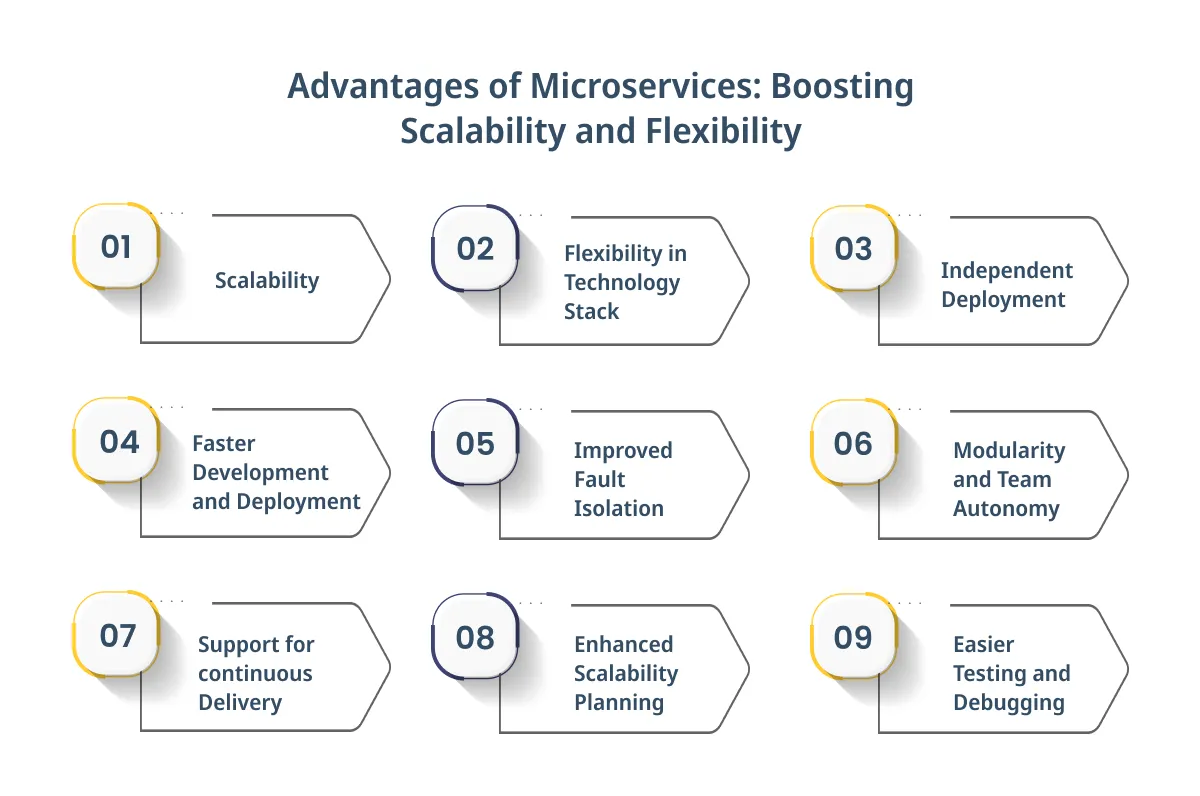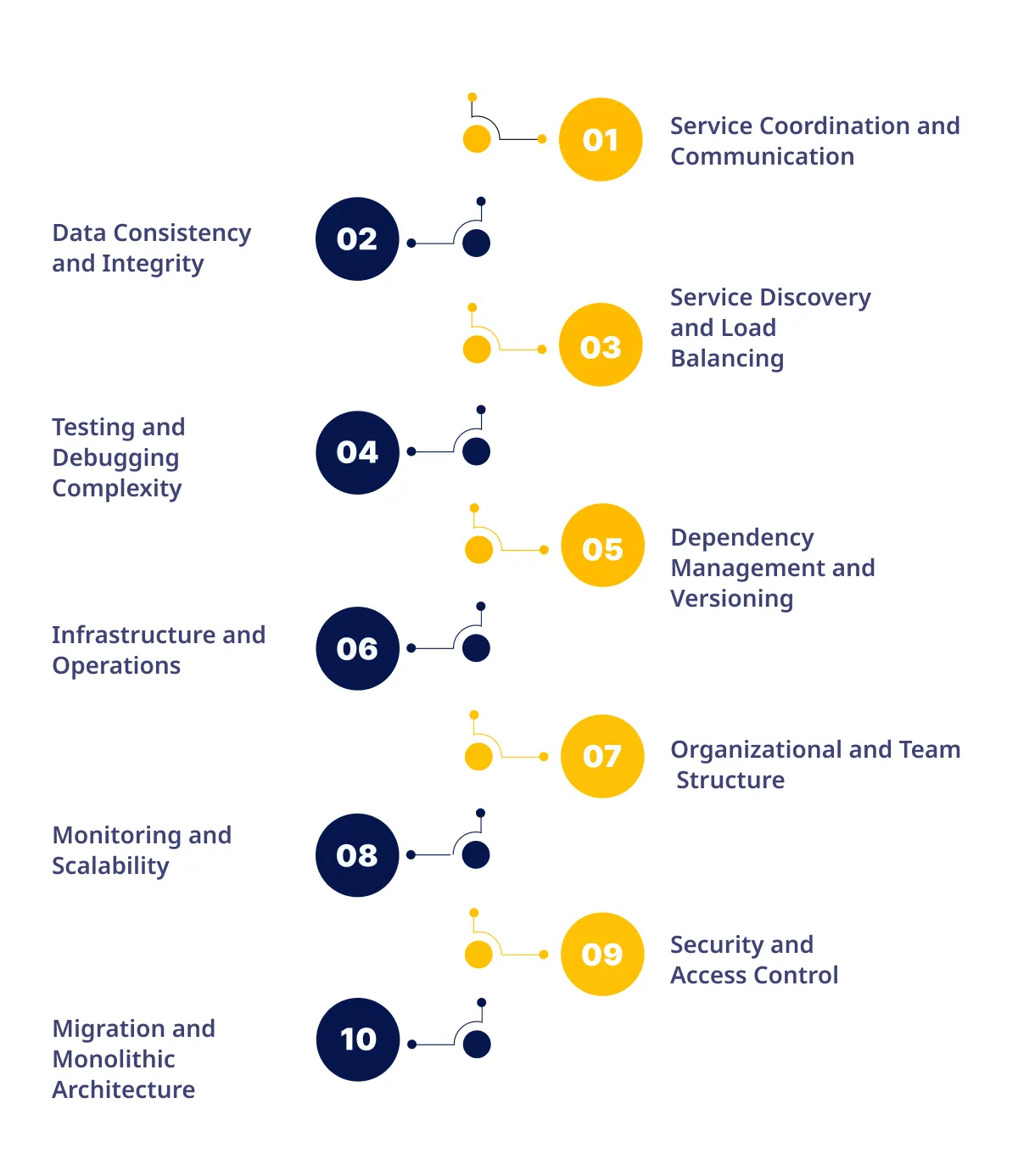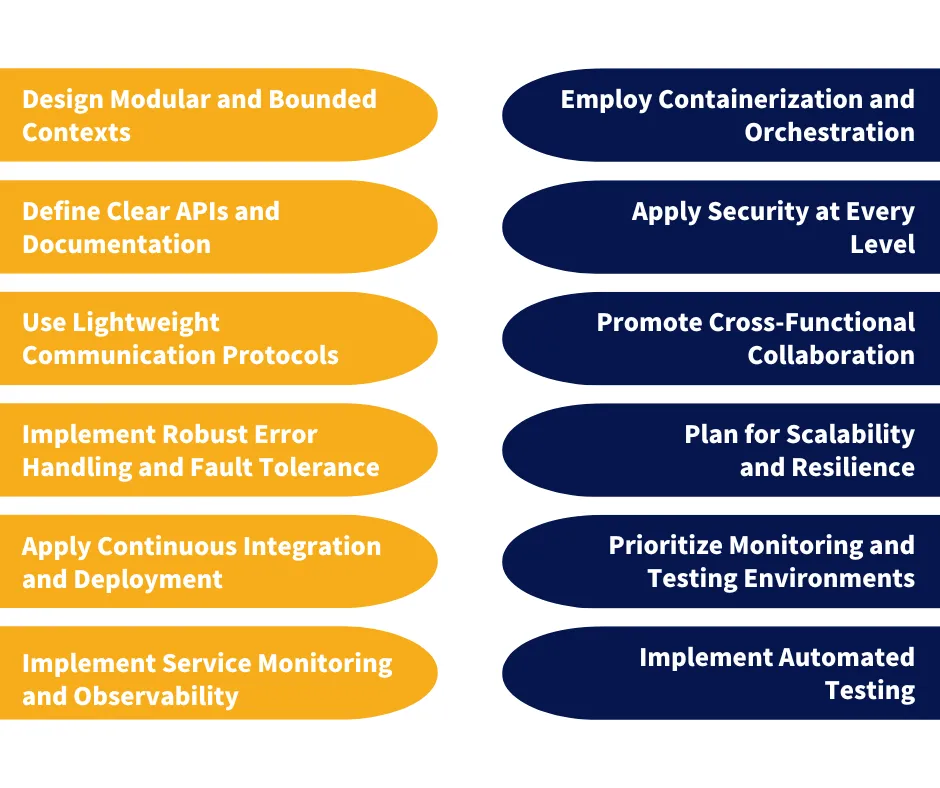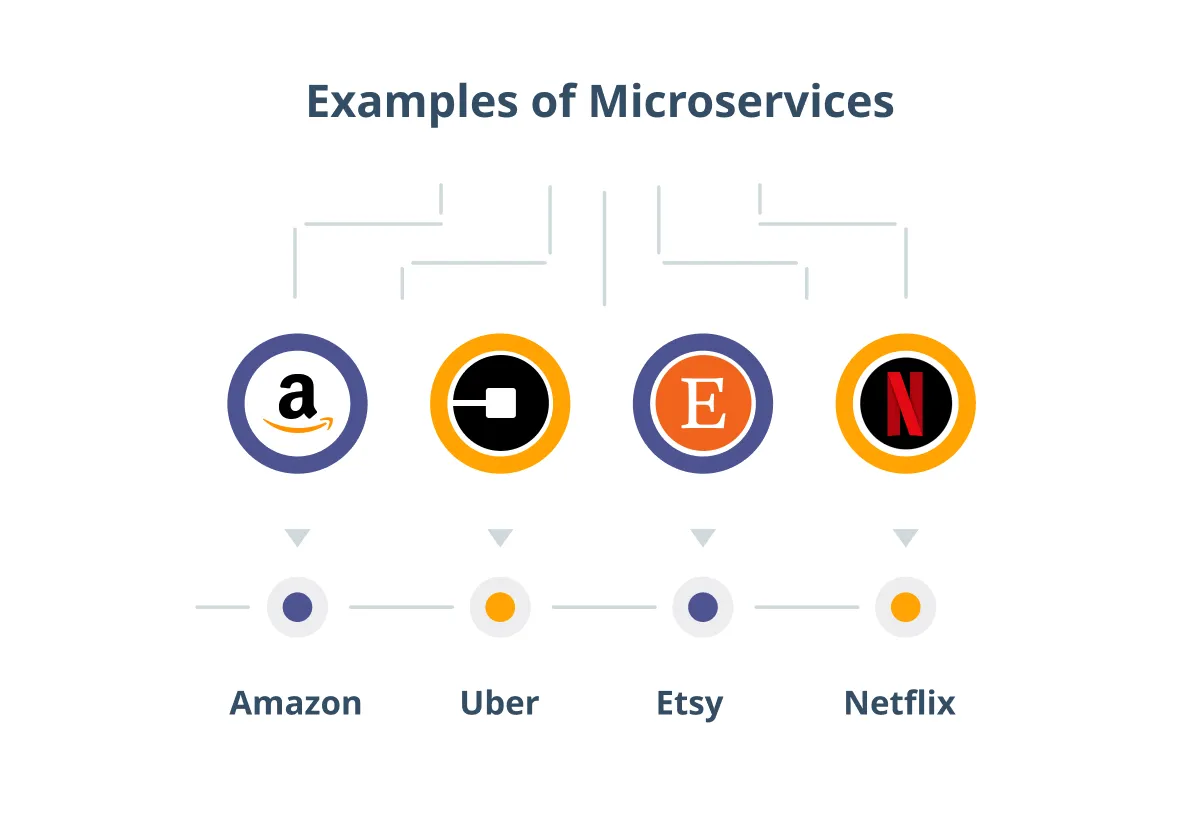Software development has become increasingly complex in today’s rapidly evolving digital landscape. Organizations strive to build robust and scalable applications while maintaining the flexibility to adapt to changing market demands. This is where microservices architecture comes into play, revolutionizing how software is designed, developed, and deployed.
According to a recent survey by Statista, it was found that a staggering 85% respondents from large organizations with 5,000 or more employees reported the utilization of microservices in their operations. This statistic emphasizes the growing recognition of the benefits and necessity of adopting a microservices architecture among larger enterprises.
Today’s blog will delve into microservices architecture and explore the advantages of microservices and how they can boost scalability and flexibility in software development.
We will uncover the fundamental principles of microservices, their challenges, and considerations of their implementation. Furthermore, we will provide valuable insights and best practices to guide you in harnessing the power of microservices to build resilient, scalable, and adaptable software solutions.
Let’s uncover the transformative potential of microservices’ architecture in revolutionizing modern software development.
Understanding Microservices Architecture
Microservices architecture is a modern approach to developing software that focuses on breaking down complex applications into smaller, independent services. Each service is responsible for a particular business capability and can be developed, deployed, and scaled independently. This architectural style promotes modularity, flexibility, and scalability.
Organizations can achieve greater agility by seeking software development consulting microservices services, as different teams can work on separate services simultaneously. Each service can be developed using different technologies or programming languages, allowing teams to leverage the best tools for the task at hand.
Microservices communicate with each other through lightweight protocols like REST or message queues, enabling loose coupling and easy integration. This architecture also facilitates scaling individual services based on demand, allowing organizations to handle varying workloads more efficiently.
Discover transformative app ideas for healthcarem sector
Advantages of Microservices: Boosting Scalability and Flexibility
Several advantages of microservices contribute to boosting scalability and flexibility in software development. Here are some key benefits:
1. Scalability: Microservices allow for horizontal scalability, meaning each service can be independently scaled based on demand. This granular scalability enables organizations to optimize resource allocation and handle varying workloads more efficiently.
2. Flexibility in Technology Stack: With microservices, a software outsourcing company can use different services to develop applications using various technologies and programming languages. This flexibility empowers teams to choose the best tools for specific tasks, leverage existing expertise, and adopt new technologies without disrupting the entire system.
3. Independent Deployment: Microservices’ architecture can be deployed independently of each other. This allows organizations to introduce new features or updates to a specific service without affecting the entire application, resulting in faster development and deployment cycles and reduced time-to-market.
4. Faster Development and Deployment: Development teams can work on different services concurrently, making it a big advantage of microservices. This parallel development approach accelerates the overall development process, allowing organizations to bring new functionalities to market faster and gain a competitive edge.
5. Improved Fault Isolation: In a microservices architecture, if one service encounters an issue or fails, it doesn’t impact the entire system. The fault is isolated to that specific service, ensuring high availability and resilience in the overall application.
6. Modularity and Team Autonomy: Each microservice represents a specific business capability, making the system modular. This modularity enables independent maintenance and offshore software development of services, allowing teams to work autonomously, iterate quickly, and make changes without extensive coordination.
7. Enhanced Scalability Planning: Microservices architecture enables organizations to focus scalability efforts on specific services that experience high demand. This targeted approach to scaling avoids unnecessary resource allocation and optimizes cost efficiency.
8. Easier Testing and Debugging: Another advantage of Microservices is that it promotes isolated testing and debugging. Since each service has well-defined boundaries, testing, and debugging can be performed independently, allowing for more focused and efficient troubleshooting.
9. Support for Continuous Delivery: Microservices align well with continuous delivery practices. Their independent deployment and modular nature facilitate frequent and incremental releases, enabling organizations to respond swiftly to market needs and deliver value consistently.
Organizations can embrace the advantages of microservices architecture by turning to custom software development companies in India, like ValueCoders, and harness these benefits to create scalable, flexible, and adaptable software systems that align with their business requirements and drive innovation.
Further Explore: Software Technology Consulting: Scale Your Business
Challenges in Microservices Architecture
While the advantages of microservices are numerous, it also brings challenges. Understanding and addressing these challenges is crucial for successful implementation. Here are some critical challenges in a microservices architecture:
1. Service Coordination and Communication: In a microservices environment, services must communicate and coordinate. Managing service-to-service communication, handling different protocols, and ensuring efficient data transfer can be complex, requiring careful design and implementation.
2. Data Consistency and Integrity: Maintaining data consistency across multiple services can be challenging. As services operate independently, ensuring data integrity and managing distributed transactions becomes crucial. Implementing strategies like event-driven architectures, eventual consistency, and distributed data management can help address these challenges.
3. Service Discovery and Load Balancing: With a growing number of offshore software development services, discovering and managing them becomes critical. Implementing service discovery mechanisms, load balancing strategies, and intelligent routing are essential to enable efficient and reliable communication between services.
4. Testing and Debugging Complexity: Testing and debugging in a microservices architecture can be complex due to the system’s distributed nature. Coordinating tests, setting up appropriate test environments, and debugging across multiple services require specialized tools and practices.
5. Dependency Management and Versioning: Managing dependencies between services and handling versioning can be challenging. Changes in one service may impact others, necessitating careful versioning strategies, backward compatibility, and effective communication to avoid service disruptions.
6. Infrastructure and Operations: Microservices architecture introduces infrastructure management and operations complexities. Implementing containerization, orchestration tools, and monitoring solutions become crucial to ensure efficient deployment, scalability, and monitoring of services.
7. Organizational and Team Structure: Adopting microservices often requires organizational and team structure changes. Teams need to be organized based on service ownership, and cross-functional collaboration becomes essential for the effective development, deployment, and maintenance of software development consulting services.
8. Monitoring and Scalability: Monitoring the performance and scalability of individual services, as well as the overall system, is vital. Implementing comprehensive monitoring solutions, scalability strategies like auto-scaling and load balancing, and efficient resource management are necessary for optimal system performance.
9. Security and Access Control: Microservices introduce additional security challenges. Implementing robust authentication, authorization, and access control mechanisms to protect sensitive data and secure communication between services is essential.
10. Migration from Monolithic Architecture: Migrating from a monolithic architecture to microservices requires careful planning and execution. Breaking down monolithic applications, ensuring data migration, and managing the transition process while maintaining business continuity can be complex tasks.
By recognizing and addressing these challenges, a best software development company in India like ValueCoders can effectively overcome obstacles and harness the advantages of microservices architecture. It is crucial to adopt appropriate design patterns, employ suitable technologies and tools, and establish robust practices to mitigate the complexities associated with microservices.
Dive into groundbreaking app ideas for diverse sectors.
Best Practices and Implementation Tips
Implementing microservices architecture requires careful planning and adherence to best practices. Here are some best practices and implementation tips to ensure successful adoption:
1. Design Modular and Bounded Contexts: When you partner with a software outsourcing company, breaking down the system into smaller, loosely coupled services based on well-defined boundaries and business contexts allows for independent development and easier maintenance. It also enables the scalability of individual services without affecting others.
2. Define Clear APIs and Documentation: Clearly defining and documenting APIs ensures seamless service communication. This promotes easier integration, independent development, and collaboration between teams working on different services.
3. Use Lightweight Communication Protocols: Choosing lightweight protocols like REST or message queues for inter-service communication minimizes overhead and ensures efficient and scalable communication between services.
4. Implement Robust Error Handling and Fault Tolerance: Building fault-tolerant services by incorporating error-handling mechanisms, retries, and circuit breakers enhances the system’s overall stability. It helps a software development company in India handle failures gracefully and ensure continuous operation.
5. Apply Continuous Integration and Deployment: Implementing continuous integration and deployment practices streamlines the development and deployment processes. Automating build, testing, and deployment pipelines allows for rapid and reliable delivery of changes, reducing manual effort and the risk of errors.
6. Implement Service Monitoring and Observability: Setting up comprehensive monitoring and observability solutions provides insights into the performance and health of individual services. Logging, metrics collection, and distributed tracing help identify and resolve issues quickly, ensuring optimal service functionality.
7. Employ Containerization and Orchestration: Utilizing containerization technologies like Docker and orchestration platforms like Kubernetes simplify microservices’ deployment, scaling, and management. It offers advantages of microservices like flexibility, portability, and scalability across different environments.
8. Apply Security at Every Level: Implementing security measures at every layer, including network security, authentication, authorization, and encryption, ensures the protection of sensitive data and secure communication between services. It helps mitigate security risks and maintain system integrity.
9. Promote Cross-Functional Collaboration: Encouraging collaboration between offshore software development, operations, and testing teams fosters shared responsibility and facilitates effective communication. Cross-functional collaboration ensures smooth coordination among teams involved in the development and maintenance of microservices.
10. Plan for Scalability and Resilience: Designing services with scalability in mind allows for handling increased workloads. Horizontal scaling, auto-scaling, and load-balancing techniques ensure efficient resource utilization and maintain system performance. Planning for resilience includes strategies for handling service failures and recovering from them without impacting the entire system.
11. Prioritize Monitoring and Testing Environments: Establishing separate environments for testing, staging, and production helps ensure thorough testing and minimizes the risk of issues in the live environment. This segregation allows for controlled testing and validation of changes before deployment to production.
12. Implement Automated Testing: Automated testing practices such as unit, integration, and end-to-end testing offer advantages of microservices and ensure the reliability and functionality of each microservice. Automated tests can be incorporated into the continuous integration and deployment pipeline to detect issues early and streamline the development process.
By following these best practices and implementation tips, organizations can effectively leverage the advantages of microservices architecture, optimizing their development, deployment, and maintenance processes while achieving scalability, flexibility, security, and collaboration in their software systems.
From healthcare to education, see AI in action.
Examples of Microservices
Microservices architecture has gained significant traction in the industry, and several prominent companies have successfully adopted this approach to enhance their software systems. Here are some examples of popular companies that have effectively implemented and leveraged the various advantages of microservices:
1. Amazon
Amazon, the e-commerce giant, has embraced the advantages of microservices to power up its highly scalable and flexible infrastructure. They have organized their services around specific business capabilities, such as product catalog, inventory management, order processing, and payment systems.
Each service operates independently, allowing Amazon to continuously innovate, handle high-traffic loads, and provide a seamless shopping experience to millions of customers.
2. Netflix
Netflix, the popular streaming platform, relies on the advantages of microservices architecture to deliver a vast library of content to users worldwide. Microservices enable them to manage user authentication, content recommendation algorithms, video transcoding, and streaming delivery as separate services, ensuring efficient operations and continuous service availability. By decomposing its system into smaller, interconnected services, Netflix achieves resilience, scalability, and personalized user experiences.
3. Uber
Uber, the renowned ride-hailing platform, leverages microservices to handle millions of ride requests and support real-time tracking, routing, and payment processing. Each microservice caters to a specific platform aspect, such as user management, trip coordination, pricing, and driver tracking. With the advantages of microservice, Uber can scale their infrastructure based on demand, seamlessly integrate with various third-party services, and ensure robust security and reliability.
4. Etsy
Etsy, the e-marketplace for handmade and vintage goods, has adopted microservices to enable rapid innovation and provide a personalized shopping experience. Microservices at Etsy power features like product search, recommendations, shopping cart, and payment processing.
By decoupling its system into smaller services and leveraging the advantages of microservices, Etsy can iterate quickly, introduce new features, and scale different components independently, ensuring a smooth and responsive platform for buyers and sellers.
These examples highlight how companies like Amazon, Netflix, Uber, and Etsy have leveraged the advantages of microservices architecture to overcome scalability and flexibility challenges.
By partnering with a software outsourcing company, adopting a modular approach, and organizing their systems around independent services, these companies have delivered high-performance, resilient, and feature-rich applications, ultimately enhancing the user experience and gaining a competitive edge in their respective industries.
Also Read: How CRM Software Development Can Optimize Performance Of Your Business
Conclusion
In conclusion, microservices architecture has emerged as a game-changer in software development, offering numerous benefits that empower organizations to achieve scalability and flexibility. Businesses can unlock new levels of agility and innovation by adopting a modular approach and breaking down complex systems into smaller, independent services.
Organizations can leverage the advantages of microservices’ architecture by implementing and scaling their applications seamlessly to handle high traffic loads and quickly respond to changing business needs.
It enables teams to work independently on different services, accelerating development cycles and reducing time-to-market. Additionally, its flexibility allows businesses to integrate new functionalities, third-party services, and technologies without disrupting the entire system.
When considering the adoption of microservices architecture, partnering with a reliable and experienced development partner is crucial. ValueCoders, a leading software development consulting company, offers expertise in building robust microservices-based solutions tailored to specific business requirements.
Our skilled developers deeply understand microservices principles, design patterns, and best practices, ensuring the successful implementation of scalable and flexible software systems.
With ValueCoders, businesses can leverage the advantages of microservices’ architecture while minimizing implementation complexities and risks. Our proven track record of delivering high-quality services and commitment to client satisfaction make us an ideal partner for microservices development projects.
Embrace the power of microservices architecture and elevate your software development capabilities with ValueCoders. Experience enhanced scalability, flexibility, and innovation that will drive your business forward in today’s competitive landscape. Contact ValueCoders today to embark on a transformative journey toward building modern and future-proof software solutions.

